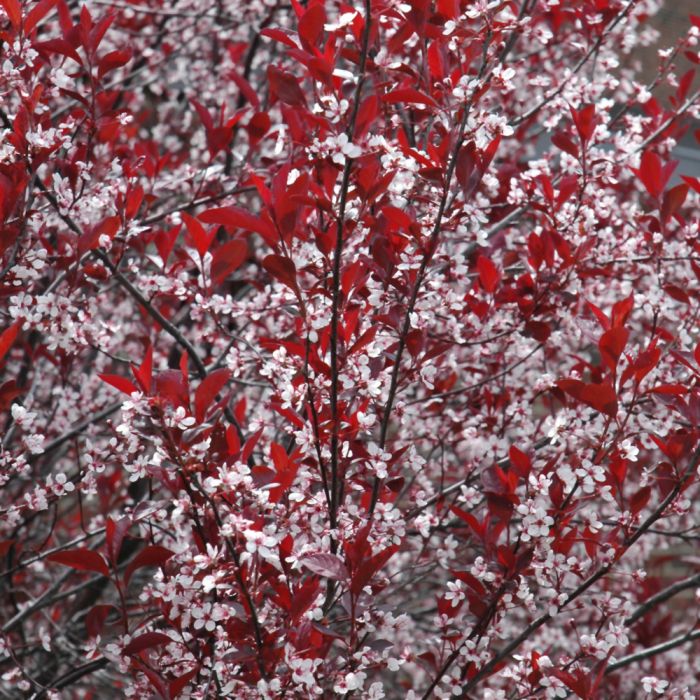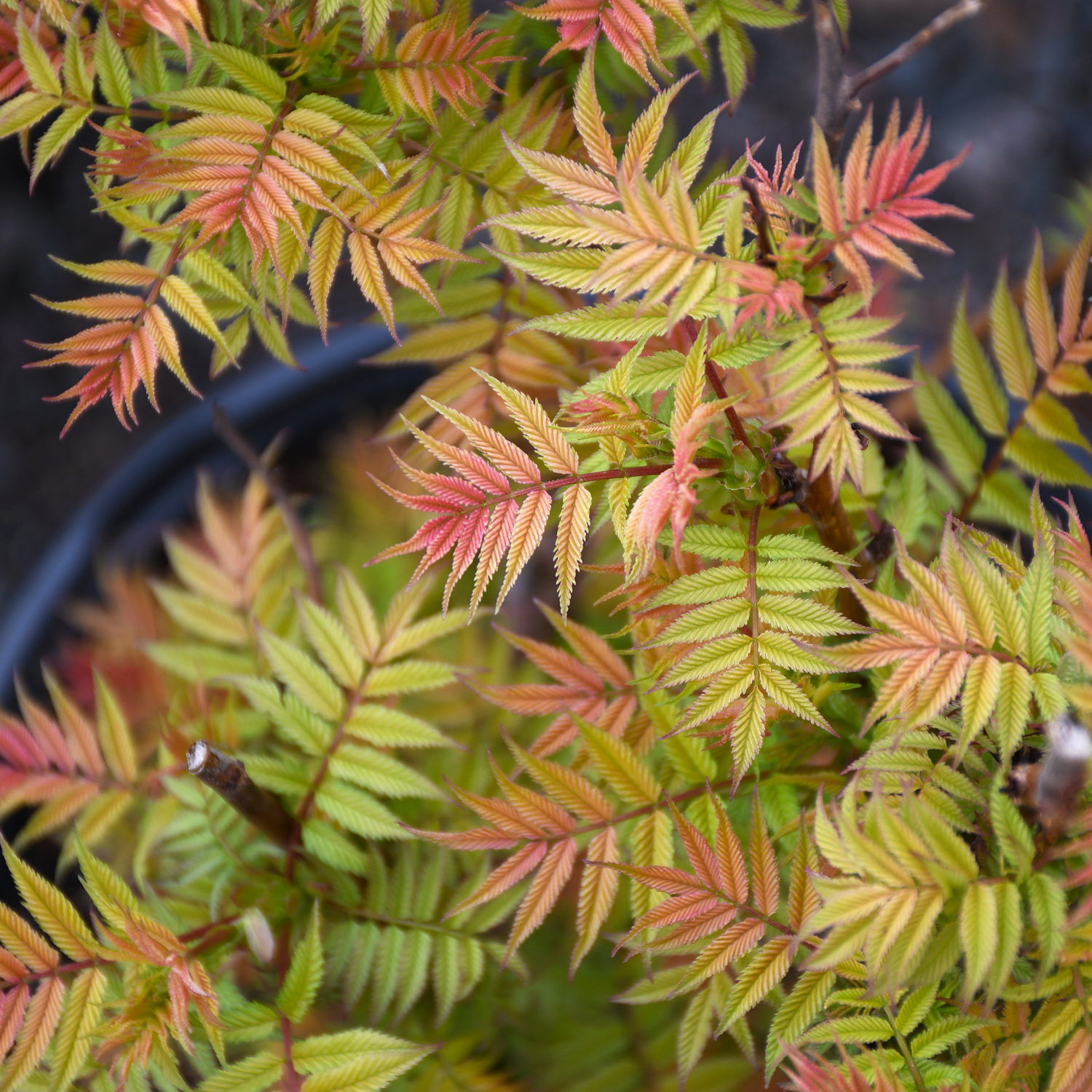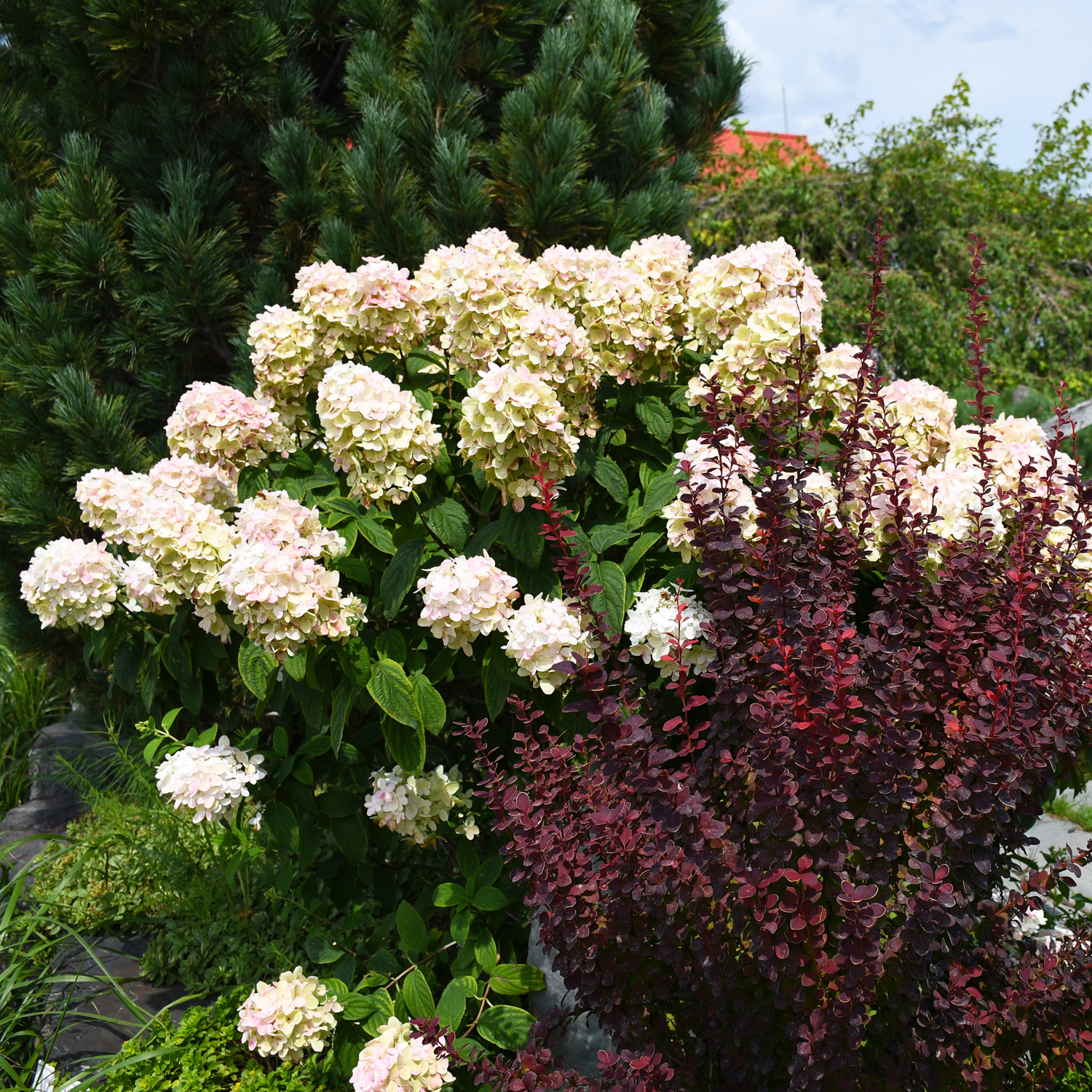Prunus, Sand Cherry 'Purple Leaf'

Out of stock
Sold out for the season- Sun Preference
- Full-Sun
Description
A popular color accent shrub, upright-branched and wide spreading; small pink flowers in spring are elegant, but the reddish-purple foliage is a standout all season long; needs full sun and well-drained soil, excellent for adding lasting color to a garden
Minnesota's Largest Selection of Shrubs
Elevate your landscaping with Gertens' unmatched variety of shrubs! Selecting the right shrubs for your backyard can enhance its beauty and functionality. Consider factors like sunlight, soil type, and mature size when choosing shrubs. For sunny areas, flowering shrubs like roses or hydrangeas can add color and charm. In shady spots, opt for shrubs like azaleas or hostas. Evergreen shrubs provide year-round interest and privacy, while deciduous shrubs offer seasonal color changes. At Gertens, we offer a wide selection of shrubs to suit every backyard need.
Details
Height: 7 feet
Spread: 7 feet
Sunlight:![]()
Hardiness Zone: 3b
Other Names: Cistena Cherry
Description:
A popular color accent shrub, upright-branched and wide spreading; small pink flowers in spring are elegant, but the reddish-purple foliage is a standout all season long; needs full sun and well-drained soil, excellent for adding lasting color to a garden
Ornamental Features
Purpleleaf Sandcherry has attractive burgundy foliage throughout the season. The pointy leaves are highly ornamental and turn an outstanding red in the fall. It features delicate fragrant shell pink flowers along the branches in mid spring, which emerge from distinctive pink flower buds before the leaves. The fruit is not ornamentally significant. The smooth bark and deep purple branches add an interesting dimension to the landscape.
Landscape Attributes
Purpleleaf Sandcherry is a multi-stemmed deciduous shrub with an upright spreading habit of growth. Its average texture blends into the landscape, but can be balanced by one or two finer or coarser trees or shrubs for an effective composition.
This is a high maintenance shrub that will require regular care and upkeep, and is best pruned in late winter once the threat of extreme cold has passed. It has no significant negative characteristics.
Purpleleaf Sandcherry is recommended for the following landscape applications;
- Mass Planting
- General Garden Use
Planting & Growing
Purpleleaf Sandcherry will grow to be about 7 feet tall at maturity, with a spread of 7 feet. It tends to be a little leggy, with a typical clearance of 1 foot from the ground, and is suitable for planting under power lines. It grows at a medium rate, and under ideal conditions can be expected to live for approximately 20 years.
This shrub should only be grown in full sunlight. It does best in average to evenly moist conditions, but will not tolerate standing water. It is not particular as to soil type or pH. It is highly tolerant of urban pollution and will even thrive in inner city environments. This particular variety is an interspecific hybrid.
| SKU | Container Size |
| S2050 | #5 Container (5 Gallon) |
* Not all container sizes may be available at this time. See store for details on specific container size availability.
More Information
| Available for Pre-Order | No |
|---|---|
| Sun Preference | Full-Sun |
| USDA Hardiness Zone | 3, 4, 5, 6, 7, 8 |
| Common Family Name | Cherry |


